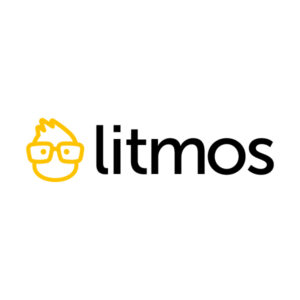Enhancing Workplace Learning and Engagement
In today’s fast-paced environment, weaving learning into the daily workflow is crucial for cultivating a skilled and adaptable workforce. For Learning and Development (L&D) leaders and training professionals, grasping the concept of Learning in the Flow of Work (LIFOW) is essential. This approach transforms learning into an integral component of day-to-day tasks, enabling employees to enhance their skills in real-time. Not only does it boost productivity, but it also enriches the overall learning experience, leading to increased employee satisfaction and retention. In this article, we will explore how LIFOW drives productivity, enhances employee engagement, and reduces training costs while providing actionable strategies for L&D leaders to incorporate LIFOW into their training programs.
The Importance of LIFOW in Remote Work Environments
LIFOW holds particular significance for remote workers. By offering on-demand support through performance tools like manuals, checklists, and infographics, remote employees are equipped with the guidance needed to execute their tasks effectively. Virtual platforms also facilitate on-the-job mentoring, helping workers build essential skills and receive insights from seasoned colleagues. This model not only improves job performance but also nurtures a sense of belonging and continuous growth, which is vital in remote settings.
Boosting Productivity and Employee Engagement
As L&D professionals, the impact of LIFOW on productivity is well-understood. A recent report by Gartner indicates that LIFOW strategies can enhance employee productivity by up to 25%. Streamlining access to training materials ensures employees can swiftly resolve pressing issues, learn crucial skills, or review vital information without excessive time investment.
By embedding learning into workflows through microlearning and just-in-time training resources, such as job aids and AI-powered LMS features, organizations empower employees to acquire the insights needed for their roles without diverting significant time from their daily tasks. On-demand materials also help maintain L&D budgetary efficiency by decreasing reliance on costly in-person training sessions. For remote or hybrid teams with varied schedules, LIFOW ensures continuous learning aligned with organizational goals.
Flexibility in learning enhances employee engagement and satisfaction, addressing a broad spectrum of training needs. Research by Josh Bersin highlights that this adaptable training approach can decrease workplace stress and elevate feelings of competence by 47% and 39%, respectively. Employees who feel supported in their learning journeys are more likely to remain motivated and dedicated to their roles, leading to improved retention rates.
Cost-Efficient Training Through Flexible Learning
The effectiveness of LIFOW can greatly be influenced by how and where training is delivered. Providing multiple access points for training enables learners to find resources that suit their preferences, alleviating the frustrations often associated with inaccessible content. Ensuring that training is available in varied formats—such as videos, podcasts, infographics, quizzes, and interactive simulations—while centralizing these resources in a learning library enhances their usability.
Convenient and straightforward learning options allow education to adapt around busy schedules, creating a more enjoyable learning experience. This strategy can also reduce dependence on expensive in-person sessions, showcasing LIFOW as a cost-effective alternative. One notable example is a real estate development company that embraced this flexible training model, leading to a 20% reduction in L&D expenses.
Effective Strategies for Implementing LIFOW
To successfully weave LIFOW into workplace practices, L&D leaders should consider the following strategies:
- Prioritize Flexibility in Design. Consider the various ways employees will access learning resources and provide training in multiple formats to enhance accessibility for just-in-time training.
- Cultivate a Culture of Continuous Learning. Acknowledge and reward learning milestones, encourage knowledge sharing, and motivate managers to integrate learning into team objectives. Promoting a culture that values ongoing education can enhance innovation and performance.
- Utilize Familiar Platforms for Learning. Integrate training resources into the systems and channels that employees interact with daily, such as email, messaging tools, and project management applications, to ensure easy access.
- Assess and Refine Learning Programs. Establish clear KPIs and metrics to evaluate the effectiveness of LIFOW initiatives. Track completion rates, employee engagement, and impacts on job performance to continually enhance and tailor learning efforts.
The Necessity of LIFOW in Modern Workplaces
According to Bersin’s research, the average employee has only 24 minutes per week dedicated to learning. This highlights the vital need for integrating learning opportunities seamlessly into the workflow, providing access to essential training within limited time constraints.
Implementing LIFOW represents a strategic approach that offers substantial benefits for both employees and organizations. By incorporating learning into everyday tasks, businesses can boost productivity, cut costs, and enhance employee engagement and satisfaction. Achieving this requires a centralized Learning Management System (LMS) that meshes well with existing technology, enabling employees to access training without disrupting their workflow. A flexible training strategy fosters a more adaptable, skilled, and motivated workforce equipped to tackle the challenges of today’s work environment.
References:
[1] How To Assess The Impact Of Learning In The Flow Of Work On Employee Productivity And Performance
[2] New Research Shows “Heavy Learners” More Confident, Successful, and Happy at Work
[3] Gables Residential sees success across the board with their training program

Litmos
Litmos provides cutting-edge learning solutions for top-performing organizations, featuring an AI-powered LMS, extensive content collections, and services that drive success. Over 30 million people globally trust Litmos to educate employees, customers, and partners.



